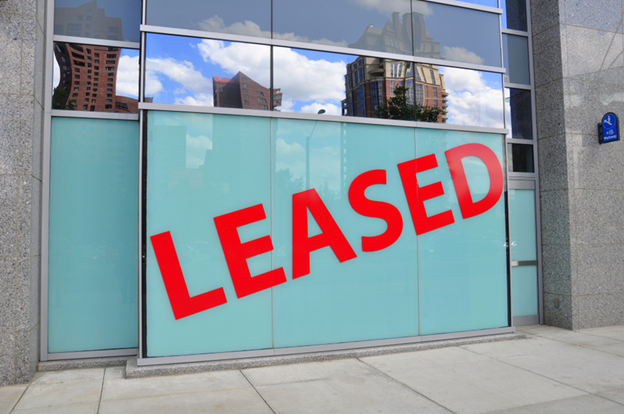When looking to rent or lease out commercial property or space, you may find yourself trying to navigate commercial landlord-tenant laws to know what your rights and responsibilities are as a landlord or tenant. The commercial real estate attorneys at Harrison Law, PLLC, offer comprehensive and knowledgeable representation to tenants and landlords of commercial properties in Arizona. Call our office at (480) 320-2310 if you have questions about a commercial lease, need help safeguarding your rights, or are dealing with a landlord-tenant dispute.
Commercial Properties
A commercial lease is a contract between a landlord and tenant, used when renting an office or any other type of commercial property or space. The term “commercial” serves to distinguish that the property is not intended for residential use, which can be important for compliance with zoning laws and other local regulations. Commercial leases cover properties used for business purposes with the potential to generate profit. Common types of properties that may be regulated by commercial leases include:
- Offices
- Industrial properties, including warehouses and factories
- Retail shops and shopping centers
- Leisure (restaurants, bars, hotels, gyms, sporting facilities)
- Healthcare settings (hospitals, clinics, nursing homes)
Statistically speaking, there are a staggering 5.9 million commercial buildings across the United States, according to the 2018 Commercial Buildings Energy Consumption Survey by the Energy Information Administration. When a landlord and tenant sign a commercial lease, the tenant is granted the right to use the commercial property or space for business purposes for a set period of time in exchange for paying money (rent) to the landlord.
The Contents of a Commercial Lease
A well-drafted commercial lease should outline the rights and responsibilities of both the landlord and the tenant to provide guidelines on all aspects of leasing and minimize disputes and misunderstandings between the parties. Every commercial lease has contents tailored to the specific circumstances of the parties, which is why using a one-size-fits-all template for a commercial lease is not generally appropriate. A commercial lease will typically contain:
- The names of the parties (landlord and tenant)
- The rent amount
- Information about the rent review
- The length of the lease
- Insurance requirements
- Conditions for terminating the lease
- Conditions for eviction
- Conditions for extending the lease
- Consequences of non-payment
- Permitted use of the premises
- The rights and responsibilities of the landlord
- The rights and responsibilities of the tenant
- Liabilities and force majeure
- Other conditions that have been negotiated between the parties
According to the Arizona Department of Revenue, commercial leases are subject to county and city transaction privilege taxes. A commercial lease does not become legally binding until after it is signed by both parties. If you have questions about commercial landlord-tenant laws, the commercial real estate attorneys at Harrison Law, PLLC, can assist you with drafting a customized commercial lease as well as with negotiating the terms of the contract with the other party to protect your rights.
A Landlord’s Responsibilities in a Commercial Lease
A commercial lease will usually detail the landlord’s responsibilities and rights. Typically, the lease specifies which party is responsible for:
- Making repairs to the property
- Maintaining the premises
- Ensuring the property’s compliance with housing and safety standards
- Ensuring the property’s compliance with building codes
- Paying for commercial property insurance coverage
Unless agreed otherwise, tenants are typically responsible for making ordinary repairs to items inside the property as well as maintaining the property’s interior, while the landlord remains responsible for maintaining the property’s exterior.
Eviction of a Commercial Tenant
Evicting commercial tenants is very different from the eviction process for residential tenants, and can present some obstacles to landlords who need to remove a commercial tenant from a property. However, it is still possible for landlords to take back possession of their property despite the challenges. Reasons for evicting a commercial tenant may differ from one case to another. Often, a tenant is evicted because they breached some term of the commercial lease (e.g., failure to pay rent or adequately maintain the premises).
In order to convict a commercial tenant, the landlord needs to:
- Review the lease. Typically, the lease will specify grounds for eviction. If the commercial lease contract states that the tenant can be evicted for non-payment of rent, the landlord can move forward with the eviction process. However, landlords preparing to evict a commercial tenant for failure to pay rent should first check the lease for a grace period guaranteed to tenants to make up late rent payments. Some leases contain 30-day grace periods.
- Notify the tenant of the issue. The next step is notifying the tenant of the intention to evict him/her in writing. Basically, this notice will serve as a warning: “If X is not fixed within Y, you will be evicted” where X is the problem and Y is the amount of time given to the tenant to fix the problem.
- Initiate an eviction case. If the tenant fails to fix the issue within the given amount of time after the notice, the landlord can file an eviction case in the appropriate county court. After a lawsuit is filed, the tenant needs to be served with the complaint to comply with the legal requirements for a formal service of process.
- Attend the court hearing. After the tenant has been formally served with papers in the civil suit, the landlord will attend the scheduled court hearing and present evidence to the judge to show why evicting a commercial tenant would be justified.
- Request a writ of possession. Assuming the judge finds in the landlord’s favor, the latter can request a writ of possession from the court that would allow them to evict the tenant and take back possession of their property.
When facing eviction, a commercial tenant may sometimes make a claim for “constructive eviction.” Constructive eviction means that the tenant could no longer use the property due to interference with the use and enjoyment of the property and has been forced out of the commercial premises.
Legal Guidance for Landlords and Tenants
If you need legal guidance as a landlord or tenant in Arizona, reach out to Harrison Law, PLLC. With our comprehensive knowledge and understanding of the state’s commercial landlord-tenant laws, we can help resolve any disputes and assist with a variety of legal issues related to landlords’ and tenants’ rights. Call (480) 320-2310 to ask your questions and discuss your concerns.
© 2023 Matthew W. Harrison and Harrison Law, PLLC All Rights Reserved
This website and article have been prepared by Harrison Law, PLLC for informational purposes only and does not, and is not intended to, constitute legal or financial advice. The information is not provided in the course of an attorney-client relationship and is not intended to substitute for legal advice from an attorney licensed in your jurisdiction.






